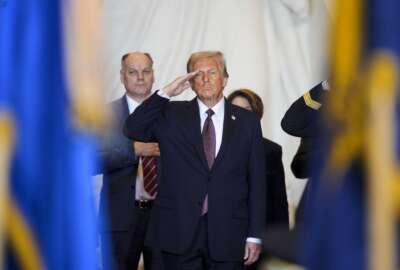OMB regulation sets standards for ‘trustworthy’ government statistics
The federal government has 16 federal statistical agencies, which have anywhere from 10 to 7,000 full-time employees.
More than a dozen federal statistical agencies produce data sets that drive policy decisions in government and business decisions across the economy.
The Office of Management and Budget, underscoring the value of that data, is setting a standard for trustworthy government statistics.
OMB, in its “trust regulation,” published in the Federal Register on Friday, is taking steps to ensure statistical agencies produce “accurate, objective and trustworthy information.”
Chief Statistician of the United States Karen Orvis wrote in a blog post Thursday that the final regulation ensures statistical agencies “remain safe places for the collection, maintenance, and sharing of information critical to government decision making,” while protecting the privacy of individuals and organizations.
“Federal statistics are produced as a public good, whose value is rooted in public trust. Maintaining and bolstering public trust in our nation’s statistics is absolutely critical,” Orvis wrote.
The regulation, required under the Foundations for Evidence-Based Policymaking Act, comes a few months after the American Statistical Association published a report warning that statistical agencies are having a harder time producing quality data.
In addition to budget and staffing shortages, the report found declining trust in the federal government corresponds with lower response rates to statistical surveys.
The report also warns federal statistical agencies lack “professional autonomy” from their parent agencies, and that they remain vulnerable to political meddling and improper influence.
The Trump administration, for example, pushed for adding a citizenship question to the 2020 census. The Supreme Court, however, blocked the Census Bureau from adding the question to decennial count forms.
The administration also pressured the Census Bureau to produce a report on the number of undocumented people in the U.S.
Former Chief Statistician of the U.S. Nancy Potok said the regulation spells out the “respective roles and responsibilities of not only the statistical agencies themselves, but the parent agencies in which they reside.”
“Finding the balance between professional autonomy for the statistical agencies to produce objective, trustworthy statistics and still serve the policy objectives of the president and executive branch political appointees has been a decades-long struggle,” Potok said.
“This is a big step forward in articulating what that balance should look like. Now we have to wait and see if there are mechanisms to enforce the regulation,” she added.
The final regulation states the federal statistical system “continues to provide the gold standard for impartial, trusted federal statistics foundational to informing decisions across the public and private sectors.”
The federal government has 16 federal statistical agencies, which have anywhere from 10 to 7,000 full-time employees.
“Increasingly, collaboration is required across the Federal statistical system to unlock greater efficiencies and leverage diverse expertise,” the regulation states.
The Data Foundation President Nick Hart said in a statement Friday that the rule “marks an important milestone in implementing the Evidence Act.”
“The success of this rule will depend on meaningful collaboration across the federal data ecosystem, far beyond recognized statistical agencies and units,” Hart said. “The Data Foundation urges statistical agencies to work closely with chief data officers, evaluation officers, performance officers, chief information officers, chief financial officers, and other key data leaders to ensure this rule supports a comprehensive, government-wide approach to evidence-building activities and responsible data use,” the foundation wrote.
Hart told Federal News Network in an interview that OMB’s regulation recognizes statistical agencies are no longer just producing discrete figures — such as gross domestic product or unemployment rates — but also coming up with objective measures of how government programs are operating.
“That’s really the broad intent of the Evidence Act, to not just understand how our government works, but help it work better,” Hart said.
Hart said OMB’s trust regulation also sets a standard for statistical agencies ahead of the president election in November and in anticipation of a new administration.
“Regardless of who wins that election, this will be a regulation that goes forward into the next administration, and into the executive branch going forward,” Hart said.
Copyright © 2025 Federal News Network. All rights reserved. This website is not intended for users located within the European Economic Area.
Jory Heckman is a reporter at Federal News Network covering U.S. Postal Service, IRS, big data and technology issues.
Follow @jheckmanWFED






